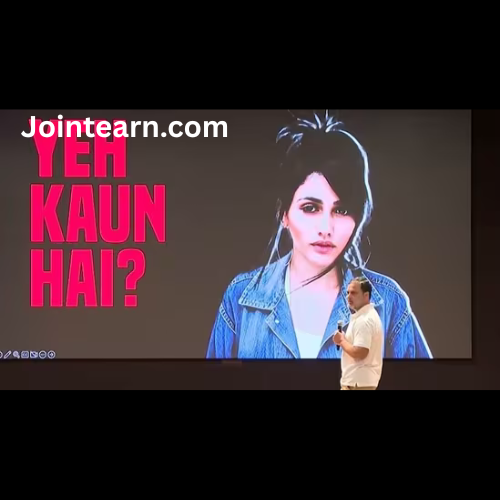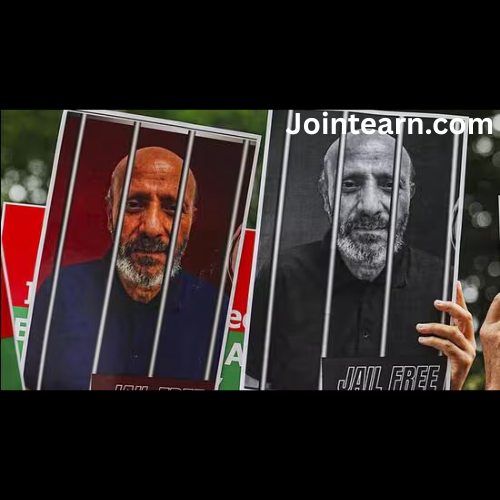NEW DELHI: Following the recent controversy surrounding a Brazilian woman’s picture circulated during Leader of Opposition Rahul Gandhi’s claims of electoral fraud, an Indian woman has now emerged at the center of a heated debate regarding alleged voter irregularities.
Identified on X (formerly Twitter) as Urrmi, the woman’s photographs allegedly show her casting votes in two different elections and two different states. The first image, dated May 13, 2024, shows her posing with an inked finger after voting in Pune during the 2024 Lok Sabha elections. The second, posted on November 6, 2025, features her similarly posing with an inked finger, accompanied by the caption: “Voted for a Modi-fied India! Jaai ke Vote daali, Bihar!”—suggesting participation in the ongoing Bihar Assembly elections.
These posts quickly caught the attention of political parties and social media users, raising questions about the authenticity of the voting claims. While Congress leaders cited the images as evidence supporting Rahul Gandhi’s allegations of voter fraud, many social media users argued that the second post was likely made in jest or as a motivational message rather than a literal declaration of voting.
Maharashtra Congress spokesperson Atul Londhe Patil shared screenshots of the two posts, adding a caption that read: “I will vote in Maharashtra in the Lok Sabha. I will vote in Bihar in the Vidhan Sabha. I will steal votes for Modi,” drawing attention to what he framed as a potential case of electoral malpractice.
Following the viral circulation of her Bihar-related post, Urrmi clarified her position, stating that she had not voted in the ongoing Bihar elections. In a subsequent post, she wrote: “Okay, this was just for motivation. I never said I voted today — I said I voted. And everyone knows it was in Maharashtra. So calm down! Motivated enough? Now your turn, Bihar. Go vote!!” Her clarification sought to defuse the controversy and emphasized that her intent was to encourage voter participation rather than claim dual voting.
The incident comes amid broader allegations of voter fraud by various political parties. The Aam Aadmi Party (AAP) accused several BJP leaders of allegedly casting votes in both the Delhi and Bihar elections. AAP’s Delhi president Saurabh Bharadwaj specifically mentioned BJP Rajya Sabha MP Rakesh Sinha, Delhi BJP Purvanchal Morcha president Santosh Ojha, and party functionary Nagendra Kumar as individuals who voted twice. In response, Rakesh Sinha defended himself, explaining that he had legitimately shifted his vote from Delhi to Bihar through the official electoral process. He termed the allegations as “baseless and morally contested” and accused the AAP and Congress of spreading misinformation.
This controversy follows a similar case highlighted by Rahul Gandhi earlier this week, involving a Brazilian model, Larissa Nery. Gandhi alleged that her photograph appeared multiple times at polling booths in Haryana under various names, including Seema, Sweety, and Saraswati, suggesting organized electoral manipulation. Larissa Nery later clarified in a video message that the photo was old, taken when she was 20, and criticized the use of her image in India for misleading purposes. She stressed that she had no connection to any Indian election and condemned the misrepresentation of her photograph as a local voter.
Together, these incidents have intensified discussions about voter fraud allegations in India, highlighting the challenges posed by viral social media content and its potential to mislead both political parties and the public. They also underscore the importance of verifying claims in the digital age, where misinformation can easily spread across platforms, shaping narratives before facts are confirmed.
Election authorities and political analysts emphasize that while images may circulate widely online, voting records are strictly maintained by the Election Commission of India, which has mechanisms to prevent illegal multiple voting. In this case, both Urrmi’s clarification and Rakesh Sinha’s defense point to misunderstandings exacerbated by social media amplification rather than confirmed electoral malpractice.
The events further illustrate how viral imagery and political messaging intersect in the digital age, often creating public confusion and political controversy. Observers note that while social media can encourage voter engagement, it also carries the risk of misinterpretation, deliberate or accidental, especially during high-stakes electoral periods.
As the Bihar Assembly elections continue, the attention surrounding these viral posts reflects the heightened scrutiny over electoral integrity and the evolving role of social media in shaping political discourse. Both political parties and citizens are being urged to verify information before drawing conclusions, while the Election Commission continues to monitor and address complaints related to voting irregularities.


Leave a Reply